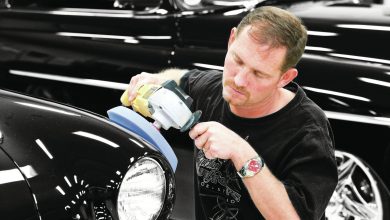Should My Truck Have Positive Camber

Camber is the word used to define the angle of the wheel within the reference to the ground. Optimum balance of wheel is required for proper tire traction and wear. The term Positive camber is used when the tires are pointed or tilted a little away at the top from the truck’s chassis. Camber has importance while maintaining the role for stability and cornering.
Should my truck have positive camber? Positive camber has its pros as well as cons. The benefits of positive camber include stability which leads towards maintaining steering easily and more efficiently. Positive camber behaves well when you are driving on irregular or bumpy roads. As a whole, it is recommended for comfortable driving and smooth turning of the truck.

Should my truck have positive camber?
Positive camber is when the wheels of your truck are inclined outward. For the truck’s stable movement and smooth behavior, here some of the facts explained within the benefits as well as issues related to positive camber.
Benefits of having a positive camber
According to research, Majority of the truck drivers use positive camber. While asking they have explained the benefits given below:
Stability
Positive camber causes the wheel to pull outside. Because of this reason they are used in agricultural vehicles as they provide enough stability. So, if you are not feeling stable within your current position of wheels, you must have to try for this.
Steering movement
Vehicles are mostly designed to have some camber to have zero camber while taking sharp turns. And positive camber supports the steering to move freely in all directions. This means while moving to steer you don’t have to use any force. And this also helps in tight spaces while parking or at narrow alleys when you take a sharp turn.
Uneven roads
While with normal or zero camber when we are driving on uneven roads, we have to face the problem of vertical opposition offered by the road. And moving the direction of the vehicle to avoid bumpy things at that type of road is a huge problem. So that’s why we use positive camber to avoid these things as it provides a wider angle within the ongoing movement.
Comfortable driving
The ideal camber is different for different vehicles. Camber changes its grip, suspension, and ground contact as it turns in any direction and directly affects grip.
At normal position or camber, the tire has more grip within the ground contact but we set the camber positive for stability within sharp turns. So, for your comfortability, you have to set the standard of camber within the requirement.
Less tire wear and handling
Adjustment of positive camber develops easy efforts for both inner and outer mechanisms. So, in this way you improve the way how your truck behaves on the road. And these terms lead towards easier handlings and less tire wear as they face minimum resistance from all types of opposition.
Disadvantages of positive camber
Positive camber has its advantages and disadvantages. Here are some cons of positive camber:
Reduced grip
While cornering or steering tire maybe got in contact with the truck’s body. When they touch each other, chances of tire grip getting worsen can increase, and maybe it can loosen the nuts resulting in the loss of grip.
Replacement
Positive camber replacement is a difficult task and you can not do it by yourself. As the angle tilted first has to straighten up then further action will be allowed. If you are replacing this on your own you will have to ready for the alignment issues related to the camber after the replacement. So, it is recommended that do this only by the professional by visiting the nearest mechanic shop.
Suspension effect
Suspension plays an important role in improving truck turning radius and performing sharp turns. It can be affected by poor simulation of camber. Almost all trucks have 30 degrees of freedom i.e., steering suspension, which is considered enough for normal movements.
What if we alter the positive camber into the negative?
You can’t explain fully the positive camber unless you compare it with the negative camber. Negative camber is used to improve the handling of the vehicle. This type of setting also reduces the vibrations vibrating in the tire. Here some of the benefits and drawbacks are given for the negative camber.
Advantages of negative camber
In the same way as positive camber, negative camber also has advantages as well as disadvantages. Both chambers positively affect your truck until you control camber gain enough within the requirements. Otherwise, these can cause a problem.
Maximizes grip
The grip is the thing you found in negative camber and that makes driving so easy even if you are driving at oval tracks. That’s become possible because it directly relates to understeer and oversteer.
Don’t overdo negative camber as the grip is already in a tight situation and it can cause overheating in the contact area and cooling effect in others. Within this condition, your tire can burst into pieces only after few minutes of regular drive.
High speed
If you want to boost your truck’s speed so that it reaches a maximum within a few seconds then the negative camber is something created for you. It becomes possible as the lower portion of the tire doesn’t contact too much within the ground. And that angle makes all the things possible by reducing the pressure on the tires.
Fewer vibrations
As stated above, pressure has been reduced and grip is flexible on the tire so it helps to maintain all the balance. This balancing condition improves the handling of the truck leading towards reducing the vibrations of the wheel.
Dis-advantages
Like every other thing in the universe, it also has some drawbacks explained below:
Increase braking distance
The distance required to stop the vehicle or the distance enough to bring the vehicle at minimum speed is known as braking distance. So now you have to be careful after changing the camber to negative because the truck is not going to stop at the same distance.
Reduces wear and tear time
An average truck tire lasts for almost 40,000 miles but it depends upon several factors. Among these factors, camber alignment is an important one. This is because the camber directly affects the tire’s grip and connection within the ground.
Reduces the traction
Traction is the result of resistance offered by the ground to the tire. Generally, the camber is responsible to control tire traction. So, if tires are aligned in the way that they are pulled from the bottom side then there are more chances of running out of tire more quickly.
Read Also;




